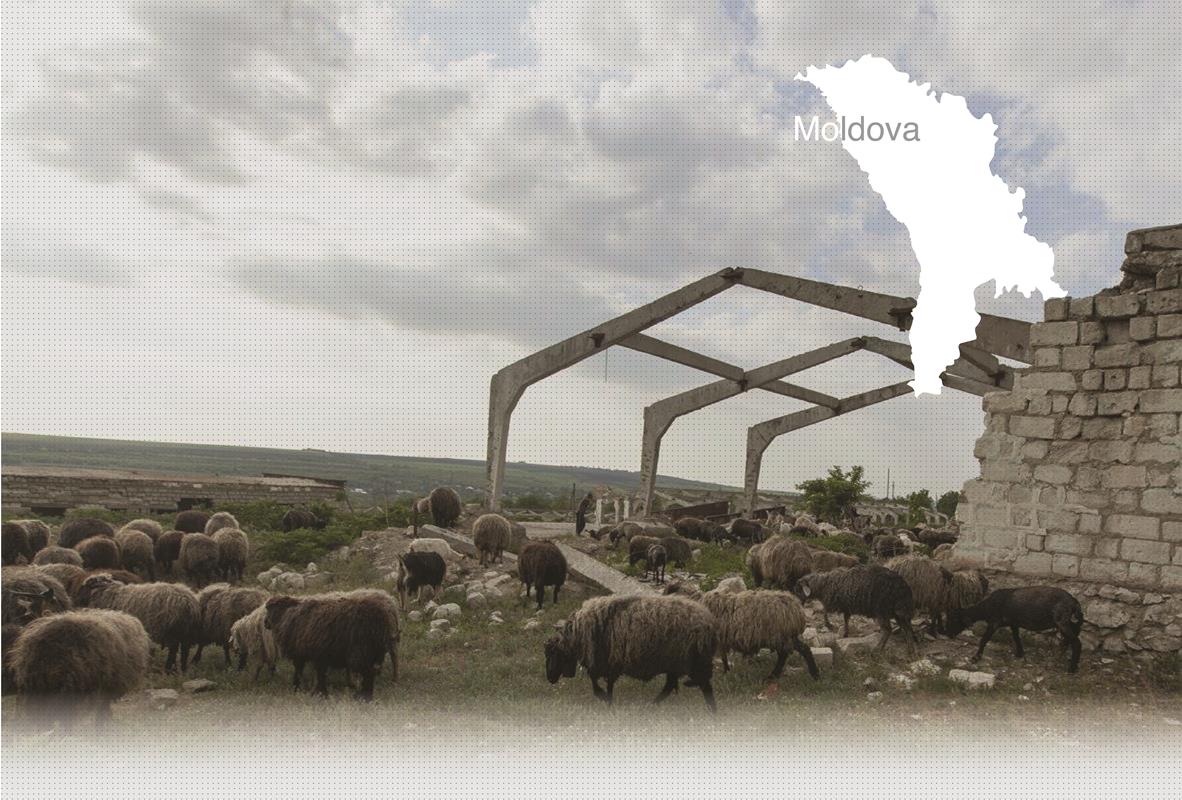

1 Killing site(s)
Maria T., born in 1928: “A column of Jews stopped on the outskirts of the village and stayed there for three day, in the open air. The Jews were guarded by soldiers. They had no food, so the villagers would go there to trade with them, despite the presence of the guards. The villagers gave them food in exchange for clothes. Sometimes, when they couldn’t approach the prisoners, they just threw bread into the crowd over the heads of the soldiers. After a few days spent there, several dozen Jews from the column were shot and buried in a mass grave near Frasin.” (Witness N°219M, interviewed in Codrenii Noi, on April 29th 2016)
Codrenii Noi is a village in Dondușeni District in northern Moldova. There were Moldovans and Ukrainians living in Codrenii Noi before the war. According to YIU’s witness Nadejda B., born in 1933, there were no Jewish families in the village. However, a large Jewish community lived in a nearby Jewish settlement, Briceva, located about 5km from Codrenii Noi. During the 1930s, there were 2,431 Jewish residents living in Briceva, representing almost 90% of the total population of the village. Vassili F. born in 1918, recalled that Jews from Briceva were mainly farmers, merchants and craftsmen: shoemakers, tailors, locksmiths and carpenters. Many Jewish merchants would come to Codrenii Noi to buy corn, bread, cattle and meat from the villagers, which they would sell later at the markets in bigger towns. Vassili learnt the tailor’s craft from a Jewish artisan from Briceva, Mr. Mordko Chajout. The latter had a wife and two sons named Moshe and Abram.
According to available sources, the majority of the Jews from Briceva were caught and deported to Transnistria by the German-Romanian troops upon their arrival in the village in July 1941. Only several dozen families managed to survive and came back to Briceva after the war, but none remained there. During the German-Romanian occupation, many columns of Jews were transferred through the village from different directions. Some of those columns would stop on the outskirts of the village for a night or two. Thanks to the testimony of Nadezhda B., born in 1933, we learnt that some Jews in at least one of such columns were from Ukraine because Nadezhda’s father, who was born in the Chernivtsi region, recognized one lady from his childhood village among the Jewish prisoners. This information seems to confirm that these columns were transferred from region to region, walking hundreds of kilometers and often turning in circles just to force the Jews to die along the way from hunger and exhaustion. During the investigation in the Dondușeni Region, YIU managed to collect information on the shootings of Jews from such columns and managed to locate two mass graves containing Jewish victims: one located near the village of Frasin, about 2,5km from Codrenii and another one in a ravine outside Codrenii Noi. The victims killed and buried in both places were Jews from columns that would pass through the village escorted by Romanian soldiers in autumn of 1941. Neither mass grave has a memorial today.
For more information about the killings in Frasin please refer to the corresponding profile.
Do you have additional information regarding a village that you would like to share with Yahad ?
Please contact us at contact@yahadinunum.org
or by calling Yahad – In Unum at +33 (0) 1 53 20 13 17